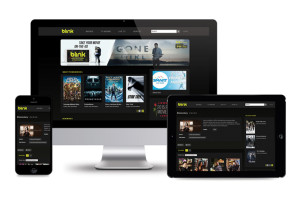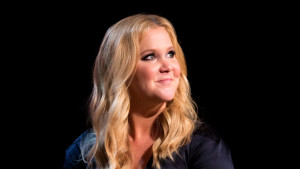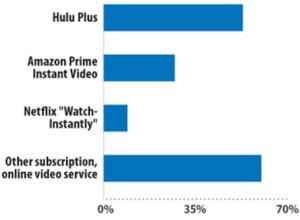This article was originally published in Videonet.
Although OTT TV is clearly taking off and competing with traditional cable and satellite almost everywhere around the globe, some still wonder what makes OTT the TV of tomorrow? What makes it so much better?
If you think about it, the television viewing experience hasn’t changed much since This is Your Life aired in the 50s and defined prime-time as we know it today. Why was prime-time so important? Much of it was because those were the hours for the entire family to watch TV together, which made the viewing experience so much more powerful. It took a passive individual experience (a person staring at a screen) and turned it into a social activity (people laughing together, commenting and sharing their thoughts on the show in the days after).
To understand why OTT is going to be the way millennials prefer to watch TV, we need to examine TV time’s biggest competitor for young viewers’ eyeballs – Social Networking. Companies like Facebook, Snapchat and Twitter can teach us how to design a user experience that every TV service aspires to create: engaging and sticky.
It’s worth going back to some of the major social networks’ founders and seeing the principles they emphasized early in their networks’ success. For example, a young Mark Zuckerberg believed:
“The attractive component of this was probably that the base was so localized…we have so much data about what people are doing on the site and how people are using it that it just makes it so that we can really enhance the experience and target stuff towards those people in ways that no one else has really been able to do before.”
That focus on localization and data allowed for personalization, which is what has helped Facebook grow into the $350 billion company it is today.
Snapchat is one of Facebook’s biggest competitors because it dominates the teen/college students demographic: 7 out of 10 snapchat users are millennials. These are the cord-nevers/cord-shavers of tomorrow. So why do they love Snapchat so much? Here’s how Snapchat CEO Evan Spiegel explained their early success:
“Now the mobile phone has really powered the idea of instant expression, which is really showing someone where you are and how you’re feeling in the moment. And this is important as it relates to identity, because really that’s one of the things that’s at the core of social media.”
One reason Snapchat has been so popular is that has allowed people to express their identity as it changes in real time.
So, personalization, identity, and real time—here we have the pillars of social networking. These are also some of the core values that will make OTT services a success.
Identity: OTT’s Big Differentiator
Let’s start with identity. Until recently, the best TV could hope for was to apply some very basic demographics to viewership. With OTT, however, identity is fundamental to the user experience. It begins at authentication. A good user experience makes this easy, perhaps even allowing users to import their online identity straight from Facebook itself. Once users log in, the provider knows who they are, what they watched, what subscription they used or one-time movie they bought.
But it needs to go further than that. A user’s OTT identity needs to feel consistent to them on all their devices. Cloud DVR is the best example of that. It’s a personalized video recording library in the cloud that allows users to enjoy their content anywhere – via mobile, the web, or through connected TVs. Similarly, users can create their own watch lists and see their viewing history.
Turning on your TV app on any device should be like looking in the mirror: you should see any shows that you are in the process of watching, some that you plan to watch next, and a few smart suggestions based on your previous behavior. At the same time, DRM and concurrency tracking are also aspects of identity in OTT, as they are crucial components required to prevent identity credentials from being stolen or shared with others.
Personalization: The Heart of User Experience
When an identity can be carried throughout the OTT experience, this makes personalization possible. Today’s viewers expect a highly personalized service, from the recommendations to even the ads themselves.
Users don’t only want to manage their own favorite lists; they want to be able compare their own viewing history to that of their friends. They expect to be able to set their own notifications so they can be informed about new content that they may enjoy as it becomes available. Their recommendations should be optimized not only based on what they’re watching, but what their social connections are watching as well.
User experience personalization should apply to business rules, as well. Users want to create their own deals, choosing whether to purchase additional services, like cloud DVR storage. They want to pay only for the content that they want to consume. They want to decide what level of viewership they want to engage at—whether free users, paying users, VIP users etc. Giving them flexibility allows them to choose the price point and viewer experience they prefer. They are even coming to expect advertising to be more targeted and relevant to them.
Real Time: Building Off the Advantages of TV
Since its early days, TV has been about live and real-time feeds. A good OTT user experience builds off that, even when offering on-demand services. A good start is incorporating real-time social feeds based off Facebook and Twitter hashtags. Again, we can go further. Users could receive real-time show reminders and notifications. When a user’s favorite show is about to begin or when a movie by their favorite director has been added to the service, notifications could be sent to users in-app or via email, depending on how they set their preferences.
Real-time reactions are even more important on the backend. Real-time analytics are key to making sure user experiences are positive. If something goes wrong for the user, it’s imperative that the service provider knows immediately so they can fix it. Today’s viewers have little patience, and are not shy about making their displeasure known!
Great User Experiences
Social networks have exploded over the past 15 years; OTT is just starting to explode now. By building off the fundamental social concepts of identity, personalization, and real time, OTT providers can develop a great user experience for their viewers, which will make the TV of tomorrow – OTT – resonate so much better with millennials.


